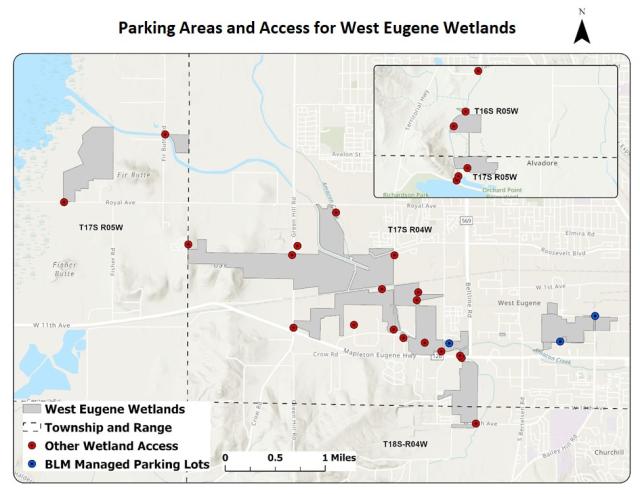Parking limits to begin in West Eugene Wetlands
Event Description
EUGENE, Ore. — The Bureau of Land Management will implement a four-hour parking limit at the West Eugene Wetlands, effective July 5, 2025.
"We want everyone to have the chance to enjoy disc golf, picnicking, hiking, walking, and birdwatching on their public lands,” said Sarah Bickford, Siuslaw Field Manager. “This change also intends to reduce day-long loitering and address public safety concerns from hazardous materials abandoned on site.”
To better accommodate a high volume of recreational users and limited parking availability, four-hour parking limits will apply during the operating hours. The site is open daily, from one hour before sunrise through one hour after sunset. The parking restriction will apply to the BLM-managed parking lots at the Stewart Pond Disc Golf Course, located on Stewart Road and Bailey Hill Road in Eugene (Figure 1).
“Four hours allows adequate time for meaningful visits to the wetlands, while also ensuring more people can visit the wetlands,” said Bickford.
Visitors can expect signs at the parking lot entrances and a slight increase in law enforcement patrols in the area. This parking restriction will be in effect for the next two years while the BLM assesses a permanent solution to address the recreational needs in the West Eugene Wetlands.
Learn more about the Stewart Pond Disc Golf Course (click for video) and other outdoor recreation opportunities: West Eugene Wetlands, Oregon - Recreation.gov.
The BLM manages about 245 million acres of public land located primarily in 12 western states, including Alaska, on behalf of the American people. The BLM also administers 700 million acres of sub-surface mineral estate throughout the nation. Our mission is to sustain the health, diversity, and productivity of America’s public lands for the use and enjoyment of present and future generations.

